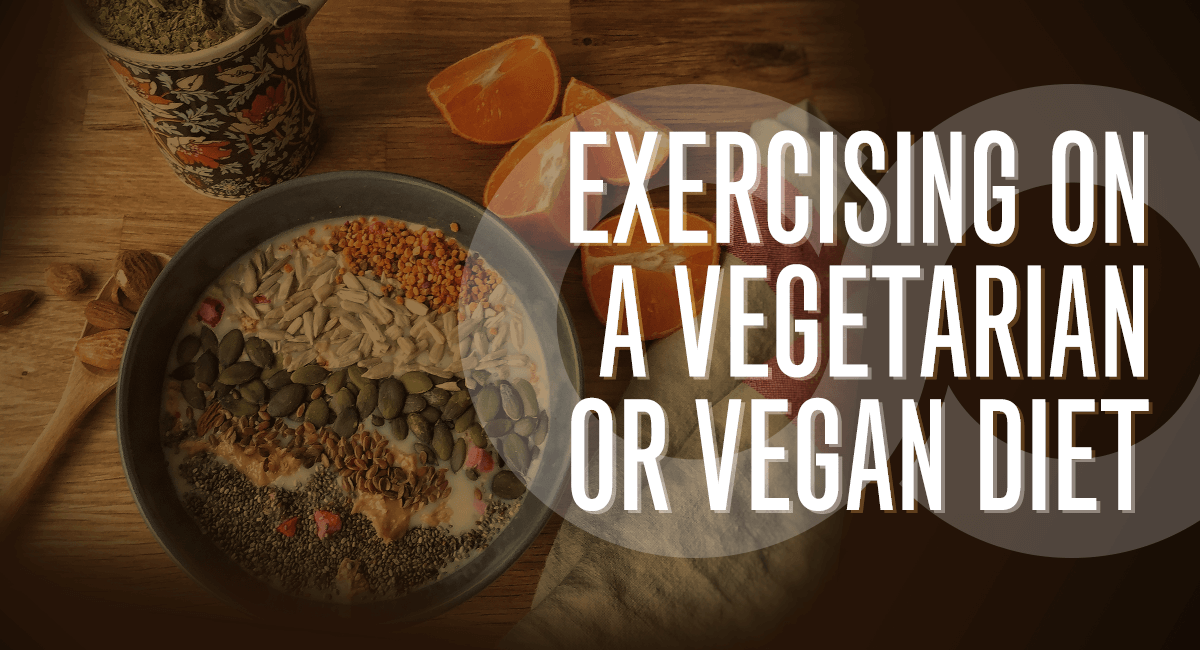Exercising On A Vegetarian or Vegan Diet

There are many reasons why people wish to transition to lifestyles that don’t include the consumption of meat. For whatever reasons you may have, the health benefits of such lifestyles are insurmountable including lower risk of heart disease and obesity. However, making such a lifestyle transformation can come with many challenges, especially for active people who demand a lot out of their body. I am no stranger to these challenges, as I have experienced many as I was transitioning to a no-meat lifestyle. A little education goes a long way to help avoid mistakes commonly made by people who demand a lot physically out of their bodies while ceasing the consumption of meat/animal products. My goal for this post is to provide information and tips for those considering going vegetarian/vegan, who still wish to exercise and compete at high levels without losing your edge.
Ensure you get enough protein
Everyone that I ever tell about my vegetarian lifestyle reacts the same way. First they are surprised that I am as active as I am without eating meat. Then they always ask the age-old question all vegetarians/vegans are asked: How do you get enough protein? I appreciate their concern, because protein is a vital part of being able to maintain a healthy active lifestyle. When you work out and stress muscles, they break down. Protein is needed to repair these muscles for proper recovery, so that they can be used again in high capacity. In all honesty, it is very easy to maintain adequate protein intake. There are ample amounts of protein in non-meat foods. Contrary to popular belief, fruits and vegetables do contain a lot of proteins, albeit in lower quantities, so you will have to eat more if you are trying to match the amount you get from a portion of meat. However, there are also numerous foods that are high in protein that are commonly found at the grocery stores. These include:
Mushrooms
Eggplant
Beans and legumes
Lentils
Chickpeas
Brown Rice
Pasta
Various grains and seeds (bulgar wheat, buckwheat, faro, millet, quinoa, flaxseeds, hempseed, chia seeds, sunflower seeds)
Humus
Various Nuts and nut products: (Almonds, cashews, walnuts, almond butter, peanut butter, almond milk, sunflower seed butter)
Oils: (Grapeseed, olive, canola, coconut, flaxseed, walnut, pistachio, hazlenut)
Meat substitutes: (Seitan, Tofu, Tempeh)
Tea and Coffee
For me personally, I do a good job of incorporating a lot of the abovementioned foods into my daily diet. I also supplement with a low carb, low sugar whey protein on days that I do workout just to ensure that my protein intake is sufficient for proper recovery.
Maintain Adequate Iron Levels
Iron is quite often an overlooked nutrient primarily because of its abundance in meat makes it easy to maintain adequate levels for the meat consumer. However, when meat is taken out of the equation, it is sometimes difficult to maintain sufficient levels. Iron is vital for quality red blood cell development. Therefore, when iron is low, you will fatigue faster and you won’t be able to get a lot out of your body. Iron levels can easily be maintained with these iron rich foods:
Iron enriched cereals, breads, and pastas
Beans
Dark leafy greens: (Spinach, kale, romaine lettuce, cabbage)
Potatoes
Chickpeas
Broccoli
Green Peppers
Raisins
Peaches
Apricots
Prunes
Peanuts
Walnuts
Pistachios
Almonds
Brown Rice
Oat bran
Pumpkin seeds
Sesame seeds
Squash seeds
When I first started eating vegetarian, I noticed the biggest negative change was that my energy levels were significantly lower, which I attributed to iron deficiency. I was able to make the necessary changes to my diet to curtail this. I personally place a high priority on green leafy vegetables and eat A LOT of these daily, and my energy has not been an issue since. However, if you are struggling with maintaining energy levels, it is recommended to consider adding a daily iron supplement.